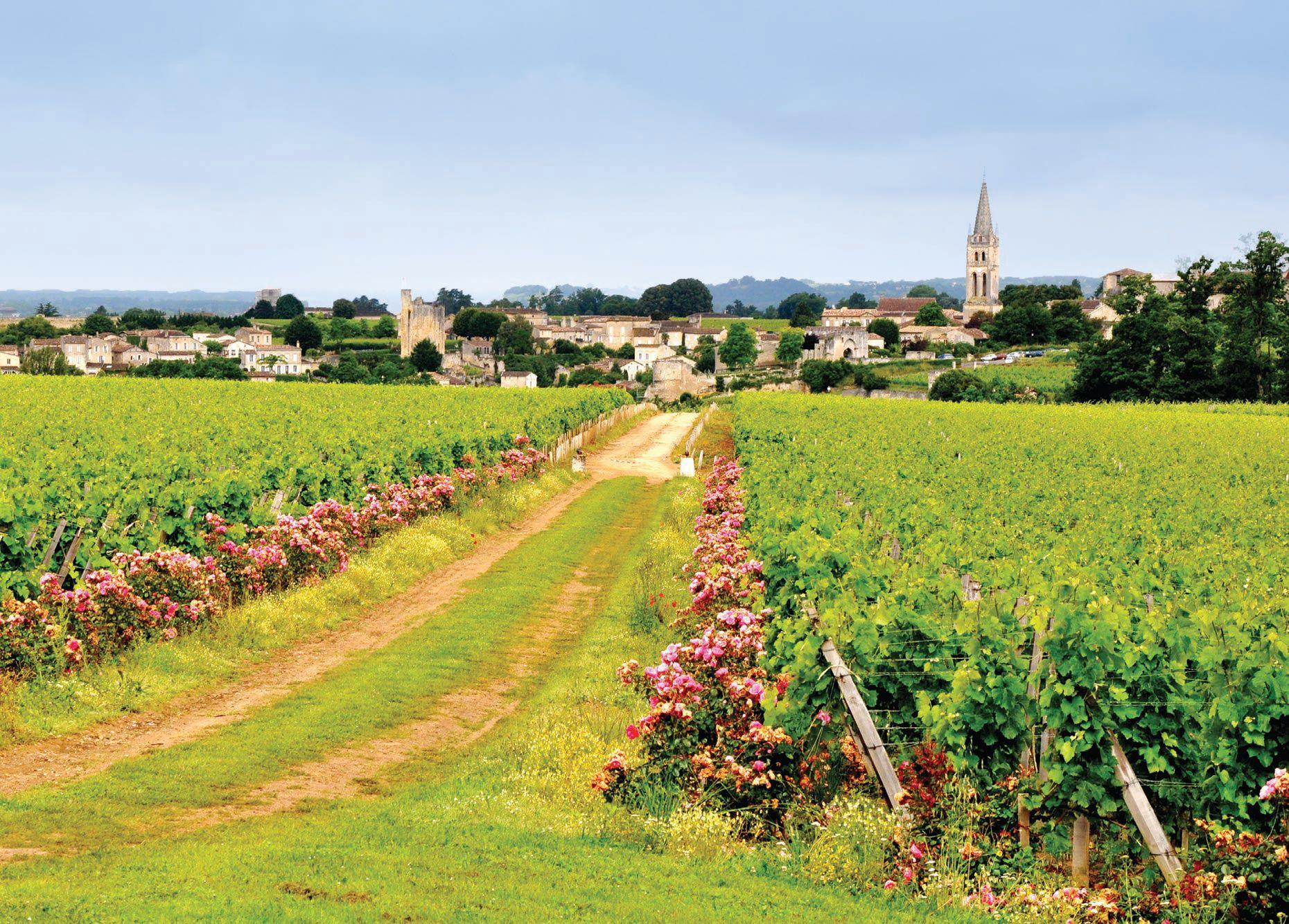
4 minute read
SALUTE
SAINT-ÉMILION
CLASSIC WINES
LEFT TO RIGHT
STORY+PHOTOS: MARY ANN DESANTIS
Mention Bordeaux and wine drinkers get all gaga… or intimidated. In fact, I can’t think of any wine that has been more daunting for me to purchase. Prices seemed astronomically high and the labels were not much help in letting me know exactly what I was buying.
And all that talk about left bank versus right bank left me totally perplexed. That is until I actually had a chance to visit the historical city of Bordeaux, long considered the wine capital of the world. My goal was to understand why Bordeaux wines are the standard by which so many other wines are compared.
For years, Bordeaux — both the wine and the city — were often associated with wine snobbery. People who ordered a glass of Bordeaux seemed to be confi dent about what they were getting and didn’t mind telling you. The region’s winemakers were not known for fl inging open their chateau doors to tourists, either. That has changed, though, as Bordeaux has awakened to a competitive and international world of wine.
The lovely gardens along the Garonne River have replaced the dingy warehouses of years past, and now tourists, local families, lovers, and street musicians frolic in the world’s largest water mirror near the Place de la Bourse. The revitalized historic city center became a UNESCO World Heritage site in 2007, and more and more chateaux are open for tours and tastings. In fact, Bordeaux has become one of France’s most popular tourist destinations, especially for those who want
to learn about its wines.
Embracing the role as a wine educator is the L’École du Vin de Bordeaux, known to Americans as the Bordeaux Wine School. It is here I began my journey through Bordeaux with a two-hour workshop geared for tourists. At only 35 euros, the workshop is a hands-on approach to learning what sets Bordeaux apart from other regions and why its wines are often considered classics.
Bordeaux wines are blends of different grape varietals. For reds, the grapes are primarily Cabernet Sauvignon, Merlot, and some Cabernet Franc mixed in to make things interesting. Occasionally, winemakers use small percentages of Petite Verdot, Malbec, and Carmenère. White Bordeaux is primarily a blend of Sauvignon blanc, Sémillon, and Muscadelle grapes.
The soils are much different along the Garonne and Dourdogne rivers that merge to form the Gironde Estuary, which runs to the Atlantic Ocean. Cabernet Sauvignon is the predominant grape on the left bank of the region while Merlot is primarily a right-bank grape. The different terroirs and microclimates certainly contribute to making each appellation unique, but knowing how to blend the grape varietals is the secret to Bordeaux’s
fi nesse.
“Blending is an art, which requires experience and know-how,” says Elsa Lejeune, a winemaker for 10 years before she became a Bordeaux Wine School instructor. “The Bordelaise are experts for blending wines with structure, elegance, and longevity.”
My wine education continued at the VINIV wine workshop at the Chateau Lynch Bages near Pauillac. One-third of the workshop’s visitors are from the U.S., and some pay big bucks to develop their own personal bottles of Bordeaux. I realized very quickly blending is not just mixing grape varietals. Other factors, like vintages and vineyards, come into play. Nevertheless, my class had fun concocting two red wines: a Cabernet-dominant blend with 65 percent Cabernet Sauvignon/35 percent Merlot — a typical left bank combination — and a second more right bank infl uenced wine with 70 percent Merlot/20 percent Cabernet Sauvignon/10 percent Cabernet Franc.
Chateau Lynch Bages Director Stephen Bolger, who led us through the blending class, explained, “Merlot is all about fruit; cabernet is all about power.”
Blending these wines often smoothes the confl icting characteristics. But just like politics, the class was evenly divided over which sample tasted the best.
With more than 7,900 wine estates and 60 different appellations, Bordeaux is France’s largest wine region. The outrageously expensive classifi ed growths that are cellared for years represent only three to fi ve percent of the wines produced. Wine school instructor Elsa confi rms what many oenophiles around the world are discovering: 95 percent of Bordeaux wines are affordable and drinkable without years of aging.
“Not everyone wants to wait 20 years to drink their wines,” she says with a smile, “and winemakers are accommodating those tastes and budgets.”
TASTING TIDBIT 24
bottles of Bordeaux are sold worldwide every second.
SOURCE: L’ÉCOLE DU VIN DE BORDEAUX (BORDEAUX WINE SCHOOL)
BORDEAUX RECOMMENDATIONS FROM LOCAL WINE MERCHANTS
Heather Hitson, wine consultant ABC Fine Wine and Spirits, Lady Lake 2010 Rothschild Bordeaux Lafi te Reserve Speciale, $49.99
Jerome Brouhard, sommelier and manager Maggie’s Attic, Mount Dora 2010 Château de Ferrand, Saint Emilion Grand Cru appellation, $14.99
ABOUT THE WRITER Living in Italy was the catalyst for Mary Ann DeSantis to understand more about wine, and she now enjoys sharing what she’s learned. Since 2010, Saluté has covered topics for oenophiles of all levels — from novice wine drinkers to experienced connoisseurs. The column received a 2013 Florida Magazine Association Bronze Award for Best Department and a 2012 Florida Press Club Excellence in Journalism Award for Commentary.





